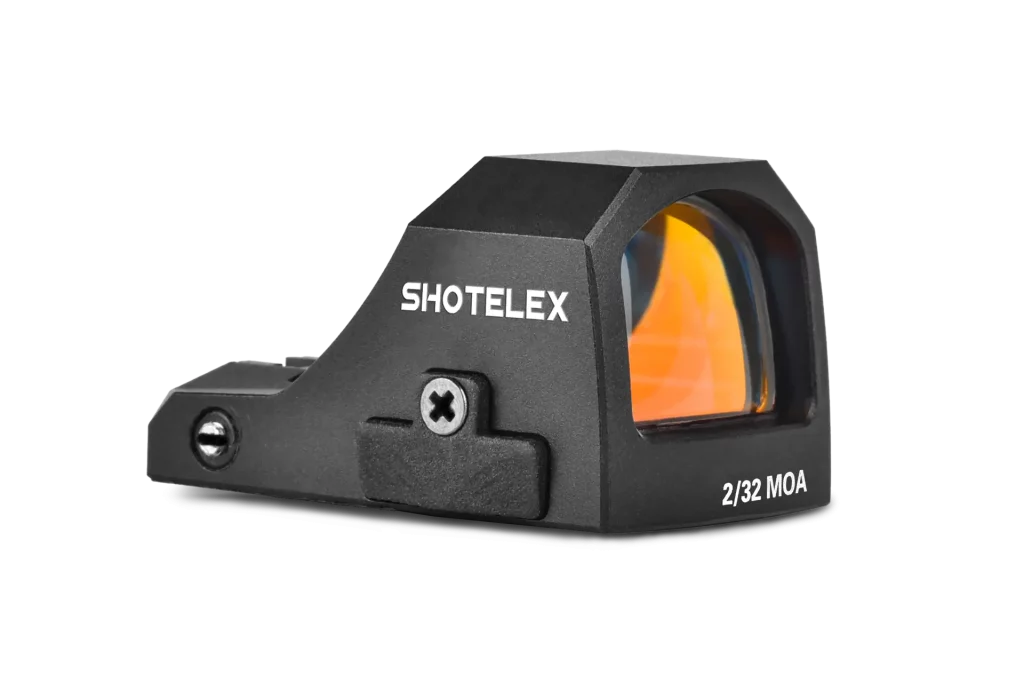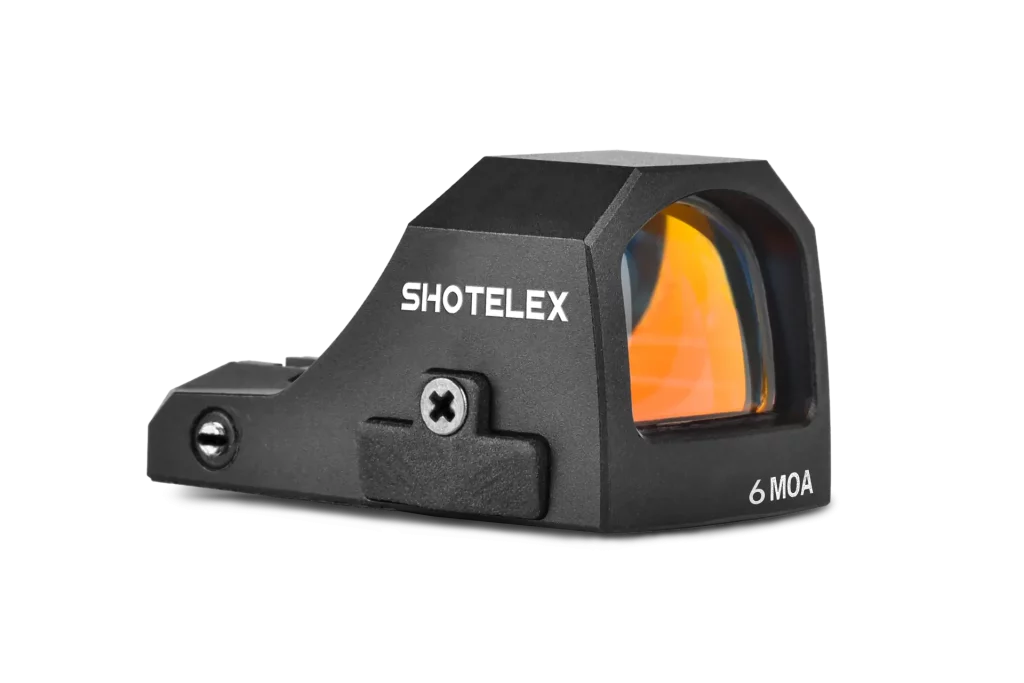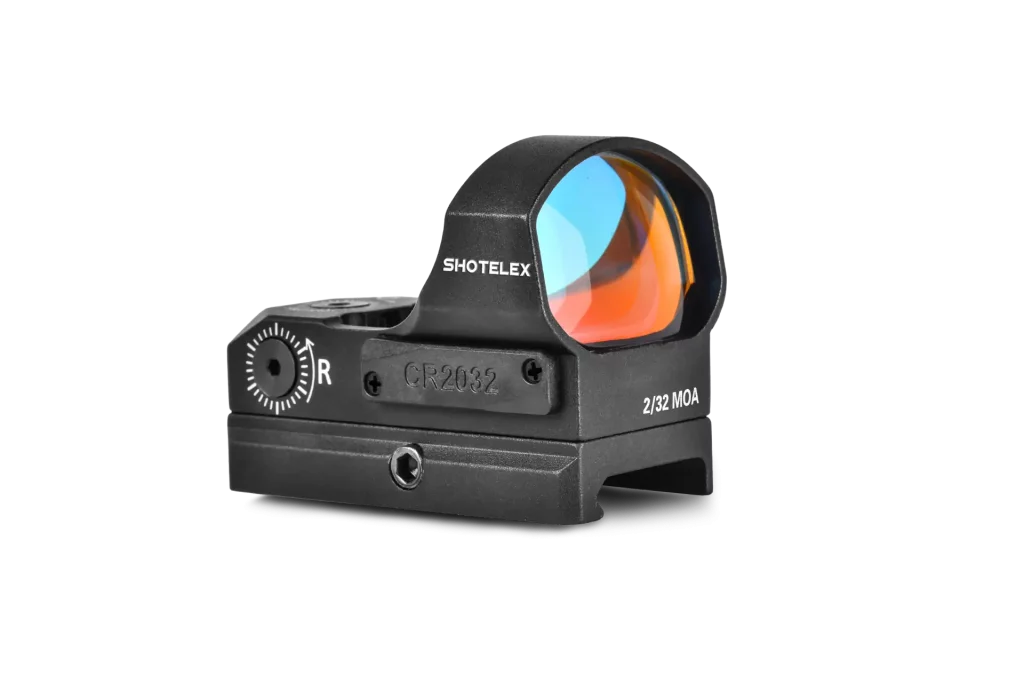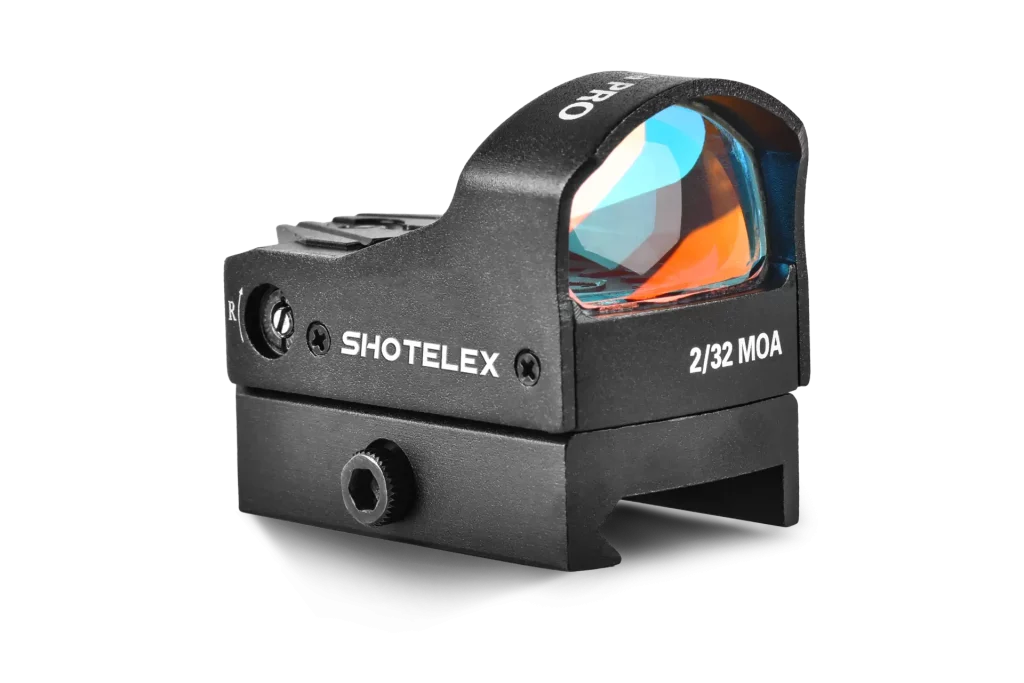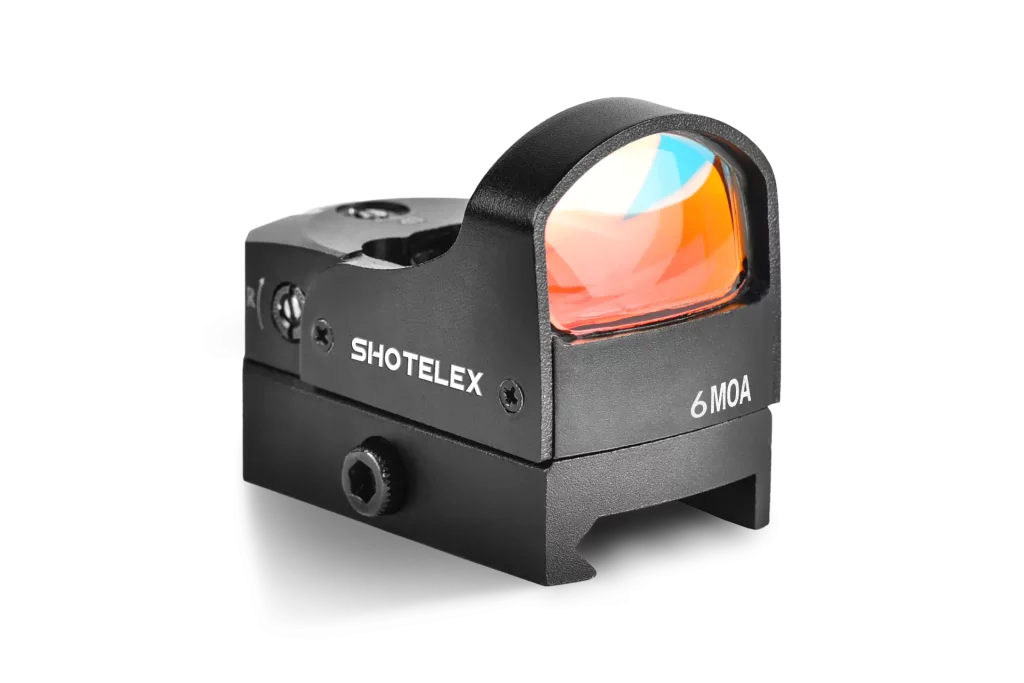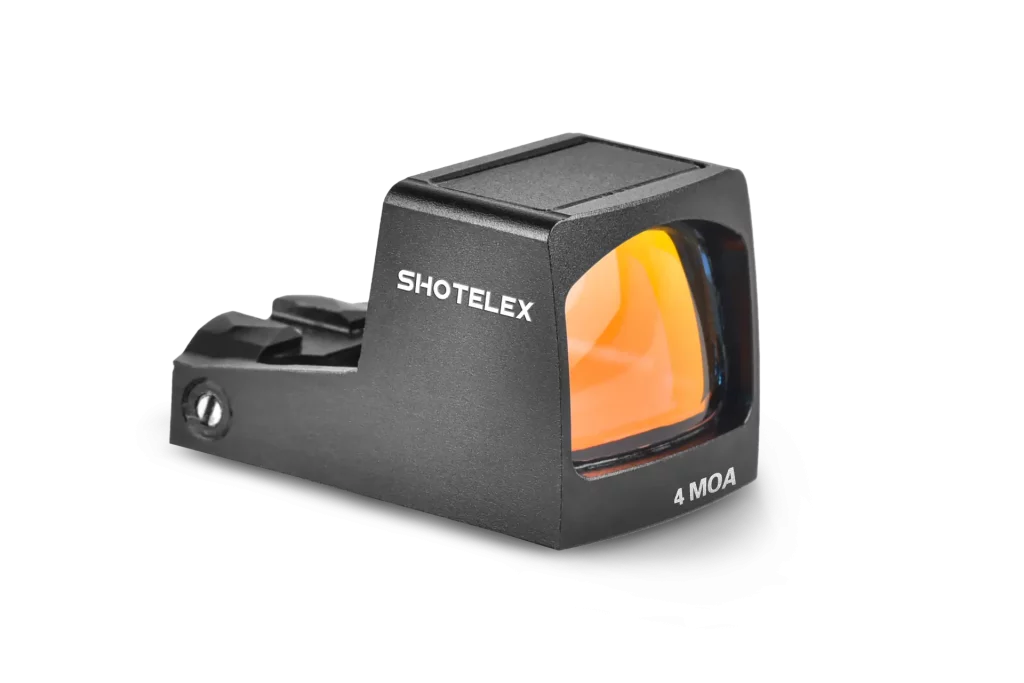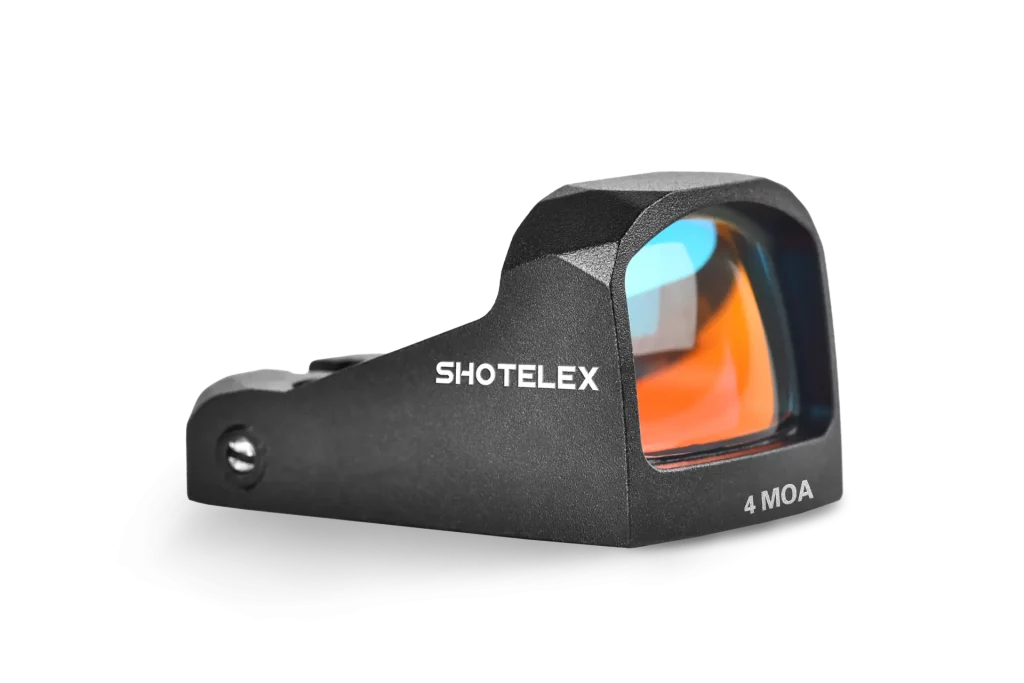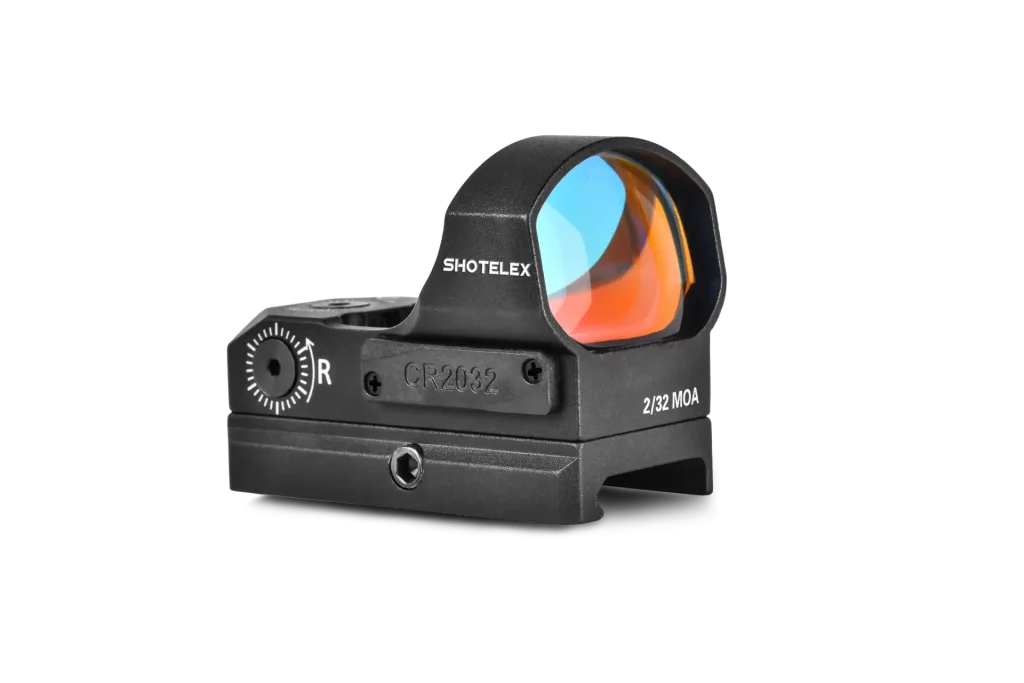Do I Need Iron Sights with Red Dot on Pistol?
In shooting ranges or self-defense scenarios, an increasing number of pistol users have begun to equip themselves with red dot sights. This device, which relies on the red dot light spot for rapid aiming, has attracted countless fans with its advantages of “quick target entry” and “wide field of vision”. But the ensuing question has also spread among the shooter group: Since the red dot sight is already so convenient, is it still necessary to retain the traditional mechanical sight (iron sight)? Is the coexistence of the two superfluous or a double insurance? As a professional supplier of Red dot sights, Shotelex will start from practical needs and break down the synergistic value of the two types of sights for you.

Advantages and Limitations of Red Dot Sight
1. Excellent aiming experience
The core advantage of the Red Dot sight lies in its subversion of the traditional mechanical sight’s “three points in a line” aiming logic. When you observe the target through the Shotelex Red dot sight, only one clear red dot spot (such as the 4 MOA specification) will appear in your field of view. Just cover the target with the red dot and you can shoot. This “what you see is what you get” aiming method gives shooters an edge in close-range rapid response scenarios such as self-defense and tactical breakouts – according to actual tests, the target capture speed of trained users using red dot sights is over 40% higher than that of pure iron sights.
2. All-scenario adaptive design
The optical system of the Shotelex Red Dot sight has been specially optimized to support precise shooting within 200 meters. Its red dot spot with adjustable brightness (11 levels of brightness adjustment) can not only maintain clarity in strong light but also avoid overexposure in low-light environments. More importantly, the no-magnification design enables shooters to avoid frequently switching aiming modes. Whether it’s a stationary target or a moving one, they can maintain an overall perception of the environment through a wide field of view – this is particularly important in complex tactical scenarios, avoiding the drawback of magnification sights that “see clearly but miss the overall situation”.
3. Limitations
However, the fatal shortcoming of the Red dot sight lies in its reliance on electricity. Even the Mini Reflex Sight of Shotelex that adopts low-power technology has a battery life of up to 50,000 hours (approximately 5.7 years), but in extreme environments (such as high and low temperatures causing a decline in battery performance), there is still a risk of sudden failure of the red dot. Furthermore, when the lens is covered by rain, mud or even blood, the red dot light spot may not project normally. At this time, the shooter will be in an awkward situation of “being able to see the target but unable to aim”.

The Advantages Of Iron Sights
1. The “Mechanical Heart” That Never Fails
The greatest advantage of iron sights lies in their pure physical structure, which requires no energy support at all. Even if the red dot sight is completely damaged, as long as the firearm itself is intact, the shooter can still complete the shooting by aligning the front and rear crosshavers. This “primitive yet reliable” design has always been regarded as the “last line of defense” in scenarios with extremely high reliability requirements such as military and law enforcement. Shotelex found during product testing that after 3,000 extreme environment tests (wind and sand, rain, high and low temperature cycling), the reset error of the mechanical sight was still controlled within 1 MOA, demonstrating astonishing stability.
2. Hidden advantages in special scenarios
- Low-light environment complementarity: When the red-dot sight has difficulty distinguishing the light spot at extremely low brightness (such as only turning on level 1 brightness to avoid exposing the position), the mechanical sight with a fluorescent coating can provide a clear aiming reference through the reflection of natural light or ambient light.
- Extreme distance correction: In shooting scenarios exceeding 100 meters, the red dot light spot may block key areas due to the reduction of the target (for example, a 4 MOA light spot covering approximately 24 centimeters at 200 meters). At this time, through the precise alignment of the mechanical sight, more delicate control of the landing point can be achieved instead.
- Psychological security boost: For novice shooters or those in high-pressure scenarios, the visibility of iron sights can effectively alleviate the “red dot failure anxiety”. This psychological sense of stability often enhances shooting performance at critical moments.

Do I Need Iron Sights with Red Dot on Pistol?
These situations must be “doubly insured”
- Self-defense and tactical uses: In home defense or law enforcement scenarios, firearms may be the only life-and-death reliance. Shotelex once received a user’s feedback that when they were attacked at night, the red dot sight suddenly went out due to poor battery contact. Fortunately, the mechanical sight filled the position in time and the situation was averted. In this case, the combination of “red dot + iron sight” is equivalent to providing a double insurance for the aiming system, preventing the best shooting opportunity from being missed due to equipment failure.
- Competitive shooting and events: Many shooting competitions allow the existence of spare sights, and some rules have strict restrictions on the handling of sight malfunctions. For instance, in IPSC events, if the red dot sight fails during the competition, continuing to shoot with a mechanical sight only deducts a small number of points, while completely giving up aiming may result in an invalid result.
- Long-term outdoor and extreme environments: In scenarios such as hiking and exploration, it is extremely inconvenient to replace batteries or repair equipment. The maintenance-free feature of iron sights has become a necessity. Shotelex’s field testing team found that during a 30-day jungle mission, shooters relying on iron sights had a 78% lower aiming system failure rate than pure red dot users.
These scenarios can “travel light”
- Short-distance recreational shooting: During practice at a shooting range within 50 meters, the advantage of the red dot sight is magnified, while the backup value of iron sights is relatively reduced. At this point, if the pursuit of lightweight firearms is made (such as in concealed carrying scenarios), the mechanical sight can be temporarily removed to reduce the overall weight of the gun.
- The confident choice of high-reliability Red Dot: Shotelex’s Micro Red Dot Sight has undergone 5,000 drop tests, 100 hours of immersion tests (IP67 protection level), and comes with a 5-year warranty. For users who trust its stability, they can choose whether to retain the mechanical sight based on the intensity of the task.

Conclusion
Back to the original question: Do you need to pair the Red dot sight with a mechanical sight? The answer depends on your usage scenario and your tolerance for “reliability”.
- If you use a pistol for self-defense, tactical or high-risk missions, the combination of “Red Dot + Iron Aim” is almost a must – it is not a lack of trust in the red dot, but a respect for the complex battlefield.
- If you are just an entertainment shooting enthusiast, you can flexibly decide whether to keep the mechanical sight based on the quality of the Red Dot sight and the intensity of use.
True precision begins with the control of every detail. Whether it’s the technological empowerment of Red Dot or the classic inheritance of iron sights, the ultimate goal is to give the shooter absolute confidence the moment they pull the trigger. Visit the Shotelex official website now to explore the dual-sight solution that suits you and make every aim a reliable choice.
Frequently Asked Questions (FAQ)
❓ Q1: Does the coexistence of two sights affect pistol grip?
✅ A: The miniaturized design of the Shotelex red dot sight (such as the 50mm Mini model) takes up little space above the grip. Ergonomic tests have shown that 95% of users say the grip feels no different from that of a pure mechanical sight.
❓ Q2: Does a mechanical sight interfere with the red dot’s field of view?
✅ A: When mounted with the 1/3 co-witness bracket, the height of the mechanical sight reaches only the lower 1/3 area of the red dot field of view, which is almost invisible under normal aiming; If a complete overlap of the field of view is required, the absolute co-witness bracket can be selected to achieve the visual superposition of the red dot and the mechanical sight, meeting the habits of different shooters.
❓ Q3: Does installing dual sights increase the weight of firearms?
✅ A: Take the Shotelex Micro Red Dot Sight as an example. It weighs only 16g, and with a lightweight aluminum mechanical sight (about 25g), the overall weight gain is controlled within 40g, which is equivalent to carrying the weight of two extra bullets and has negligible impact on actual use.

